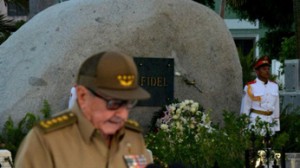More than 120 people have been reported killed by Typhoon Haiyan in the Philippines after the massive storm swept through on Friday.Aviation officials said 100 bodies were lying in the streets of the eastern city of Tacloban. Witnesses reported 20 bodies in a church in a nearby town.
The storm destroyed buildings and triggered landslides. The military has begun relief efforts.
Video from Tacloban showed it engulfed by water when the typhoon struck.
Typhoon Haiyan was one of the most powerful storms on record to make landfall.
Aid agencies are struggling to reach Tacloban, on Leyte island, where the airport has been badly damaged and only military flights are able to operate, the BBC’s Jon Donnison reports from Manila.
John Andrews, deputy head of the Civil Aviation Authority, said he had spoken to Tacloban’s airport manager who had seen more than 100 bodies around the facility and at least 100 more people injured.
The airport terminal had been “ruined” by storm surges, he added.
Local TV journalists said they had seen 20 bodies in a church in Palo, 10km (six miles) south of Tacloban.
Sebastian Rhodes Stampa, head of a UN disaster assessment co-ordination team, said there was “destruction on a massive scale” in Tacloban.
“There are cars thrown like tumbleweed and the streets are strewn with debris. The last time I saw something of this scale was in the aftermath of the [2004] Indian Ocean tsunami.”
Communications to some of the worst-hit areas were cut off when the storm hit and it may be days before the final death toll is known.
As darkness fell on Saturday, many areas were without electricity.
Jim Pe, deputy mayor of Coron town on the island of Busuanga, said most houses and buildings there had been destroyed or damaged.
Speaking by phone, he said five people drowned in the storm surge and three others were missing.
“It was like a 747 (jet) flying just above my roof,” he said.
“We have reports of collapsed buildings, houses flattened to the ground… storm surges and landslides,” Philippine Red Cross chief Gwendolyn Pang told AFP news agency.
“But we don’t know really, we can’t say how bad the damage is… hopefully today we can get a better picture as to the effects of the super typhoon.”
The storm made landfall shortly before dawn on Friday, bringing gusts that reached 379km/h (235 mph), with waves as high as 15m (45ft), bringing up to 400mm (15.75 inches) of rain in places.
Meteorologists had warned that the storm could be as devastating as Typhoon Bopha in 2012, which ravaged parts of the southern Philippines and left at least 1,000 people dead.
Schools and offices were closed, while ferry services and local flights were suspended. Hospitals and soldiers were on stand-by for rescue and relief operations.
Haiyan also battered Cebu, the country’s second largest city with a population of 2.5 million.
The eye of the storm – known locally as Yolanda – passed well to the south of the capital Manila, but the city still felt its force.
In the typhoon’s path were areas already struggling to recover from a deadly 7.3-magnitude earthquake last month, including the worst-hit island of Bohol where about 5,000 people are still living in tents.
Britain’s ambassador to the Philippines, Asif Ahmad, said on Saturday that a team of humanitarian experts would be sent by the UK “to assess needs and then mobilise resources”.
The head of the EU’s delegation to the Philippines, Guy Ledoux, had earlier told local media that the EU was also sending a humanitarian aid team.
Internet giant Google produced an interactive crisis map showing evacuation shelters, command posts and medical centres.
Officials had said more than 12 million people were at risk.
Vietnam evacuation
The typhoon is now heading for Vietnam and is expected to make landfall on Sunday.
Authorities there have begun the mass evacuation of more than 100,000 people.
State media report that schools are being closed and people living in low lying coastal areas are being moved to typhoon shelters on higher ground. Shipping has also been ordered back to port. – BBC News




